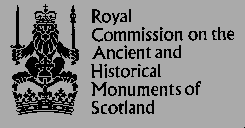
National Monuments Record of Scotland
John Sinclair House, 16 Bernard Terrace, Edinburgh, EH8 9NXTel: 0131-662-1456 Fax: 0131-662-1477/1499 E-mail rcahms.jsh@gtnet.gov.uk
 |
National Monuments Record of ScotlandJohn Sinclair House, 16 Bernard Terrace, Edinburgh, EH8 9NXTel: 0131-662-1456 Fax: 0131-662-1477/1499 E-mail rcahms.jsh@gtnet.gov.uk |
Cropmarks on air photographs show that extending ESE from the public highway for a distance of about 180m on the S side of the the track leading to Newton Farmhouse, there is a cluster of at least 17 barrows, revealed by the annular or penannular markings of their enclosing ditch, and, in most cases, what appears to be a central grave pit. The barrows range in diameter from about 4m to 10m; interspersed among them are a number of features defined by cropmarks which defy ready classification. It is possible, on the analogy of similar markings on the mainland, that some may indicate the sites of habitations. Nothing significant is visible on the ground.
RCAHMS 1984, visited May 1981.
Three penannular crop-marks were excavated in advance of road improvement scheme. All three were penannular ditched enclosures (8-9m diameter) and contained rectangular pits (2m by 0.8m; 0.8m deep) aligned SW, two of the ditches were interrupted on the W, the third on the E. The central pits contained neither skeletal material nor artefacts, though the central one did have small schist slabs set upright at each end. The form of the remaining unexcavated cropmarks appears to match this layout, with many clearly containing rectangular central pits. Other features include fence-line slots forming an elongated grid which pre-dates the ring ditches. One of 3 pre-ring-ditch period pits contained about 30% of a late Neolithic carinated bowl. Worked flint had been found in almost every context and it seems likely that in constructing the main feature an earlier flint rich site had been disturbed. On the next terrace down a circular crop mark on the line of the road was found to relate to a deep series of charred deposits, the base layer of which surrounded a stone lined hearth. These deposits contain many hundreds of flakes of all shapes, including various blade forms, (varying from c 10cm down to 2mm in length). Hammers, stones, (?) bones and flint cores were also abundant. Though no finished flint tools were found it seems reasonable to interpret this as a manufacturing site.
R McCullagh 1984
Excavations at Newton have revealed three phases of land use. Mesolithic activity was restricted to small flint working and domestic sites. A Neolithic phase appears to relate to a fragile soil resource which rapidly declined in quality. The final phase, possibly related to a christian Irish presence on the island, occurs late in the sequence.
R McCullagh 1991
McCullagh, R (1991 h)
'Excavations at Newton, Islay',
Glasgow Archaeol J, 15, 1988-89, 23-51
RCAHMS (1984 a)
The Royal Commission on the Ancient and Historical Monuments of Scotland.
Argyll: an inventory of the monuments volume 5: Islay, Jura, Colonsay and
Oronsay,
Edinburgh, 7, 55, No.31 (1), (5)